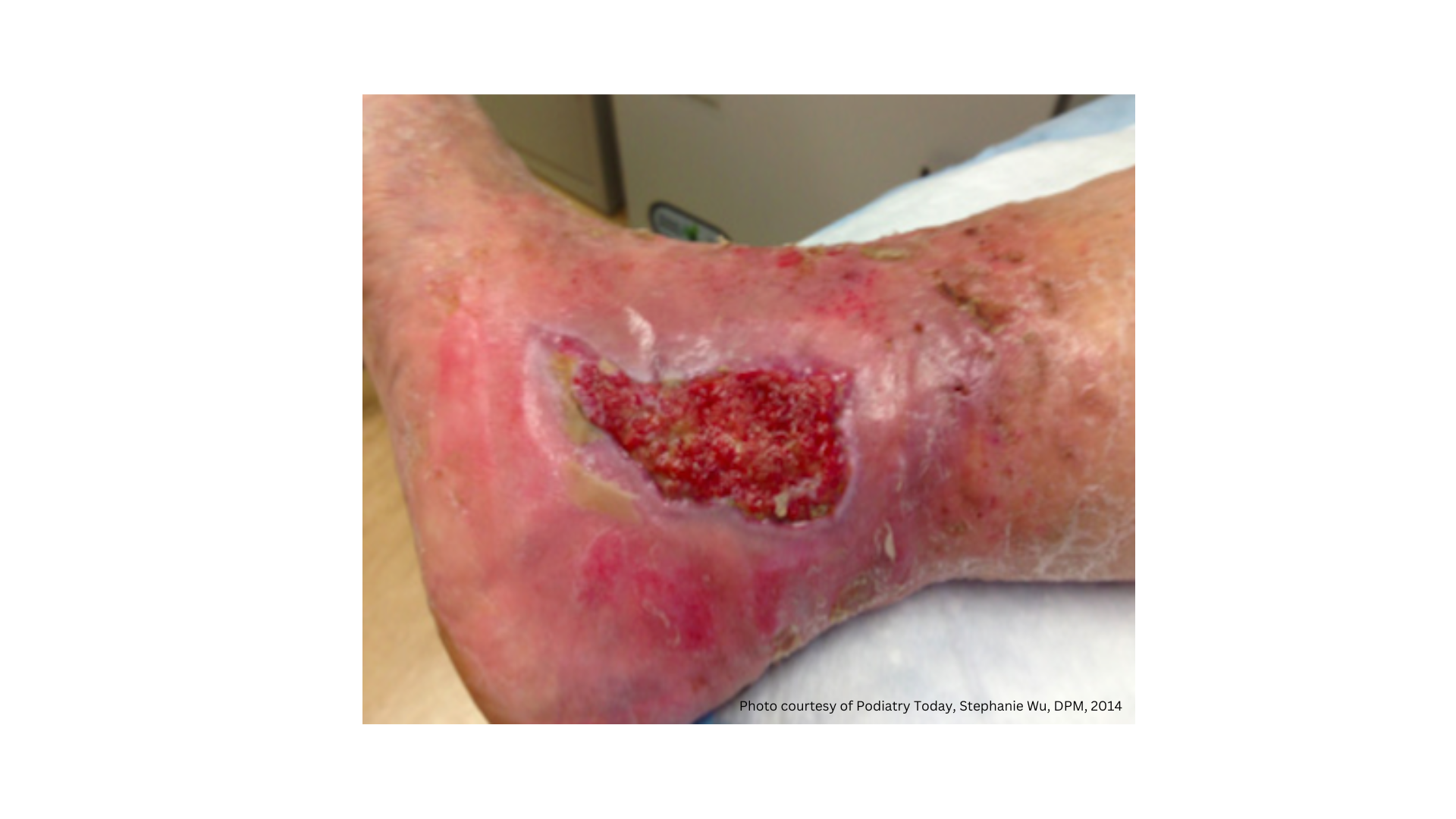Chronic Wound Care: What Does Your Patient Need?
October 31, 2021
Introduction
When working with a person who has been living with a chronic wound, it can be frustrating to try to figure out why the wound isn’t closing as the wound healing model would predict. Not all patients follow the “traditional” timeline. The wound may not progress neatly through the four phases of wound healing as expected. There may be an underlying issue that is preventing the wound from healing. How, as clinicians, can we address this? Can we actually expect closure of this wound based on the specific patient’s condition, or should we consider a palliative approach? Although we can expect that most of our patients’ wounds will able to heal, some wounds simply can’t.
These non-healing wounds may be recalcitrant wounds or wounds that have stalled and failed to progress as expected. A wound can be considered recalcitrant if it does not decrease in size by 30% in three weeks or 50% in four to five weeks. In fact, studies have shown that if the wound does not decrease in size by 50% in four weeks, it has a 91% chance of not healing in 12 weeks.1 These wounds tend to be full-thickness and often become stalled in the inflammatory phase of wound healing. They tend to lack the robust look of a healthy wound; they may have increased exudate, there may be erythema of the periwound, they may lack granulation tissue, and they may appear pale pink, white, or even necrotic.
Many factors are associated with poor wound healing. These factors include medical conditions such as poorly controlled diabetes, underlying immunodeficiency, vascular or cardiac disease, and cancer.2 Recalcitrant wounds may also occur with advanced age (cells may become senescent), smoking status, malnutrition, poor sleep, and chronic stress. Lifestyle factors may also come into play here: access to care, ability to obtain dressings and apply them appropriately, and social support.
Hypothetical Patient
Let’s say you have a patient who has a number of underlying comorbidities. For example, let’s say you have a patient, “George,” who is an older man, has been a life-long smoker, has underlying vascular and cardiac disease, and lives at home alone without any family or caregiver support. George has a hard time finding rides to his appointments, so you may see him only once or twice a month. He is on a fixed income and tells you that he primarily eats frozen, prepackaged meals because they are the easiest for him to prepare. George developed a wound on his leg a year ago that you diagnosed as venous in etiology.
How much do you know about managing chronic wounds? Take our 10-question quiz to find out! Click here.
Over the last year, you have attempted therapy with different types of conventional dressings and compression therapies, but he reports that he doesn’t like to use compression wraps and has a hard time putting on compression garments. George had pneumatic compression pumps delivered to his home, but he reports that he rarely uses them because the devices are “too complicated.” He does have visiting nurse services to assist with dressings, but they can come to his home only two to three times a week. George’s wound has a copious amount of exudate, which ideally would require a daily dressing change, and he has no other caregiver who can help with this.
The wound itself hasn’t changed much over the last year. It remains full-thickness and has a fine layer of slough or biofilm that requires regular debridement. The periwound skin often has signs of maceration and persistent erythema. His legs remain edematous, and the skin has become tough and thickened from years of edema. How would you go about treating this patient?
Palliative Approach
This is when a palliative approach may be considered. As with any patient, all options should be presented, but if a patient is unable to tolerate the therapy, we can consider alternative approaches that treat the patient in a more holistic manner. This may include using alternative forms of compression over standard wraps or devices, providing quieter or smaller negative pressure wound therapy (NPWT) devices, working to protect the periwound skin from exudate or tape, and selecting dressings and cleansers that are comfortable and less intrusive and that protect the wound from infection and manage moisture properly. In George’s case, it is important to be honest and clear about the likely outcome of healing. George should know that his wound is likely to be chronic without resolution. It may get better or worse with time, but the goal of care should be geared toward George’s overall comfort. With this in mind, you and George discuss a plan that gives him a better sense of control over his situation. He agrees to put moisture barrier cream on his skin surrounding the wound to help prevent maceration and further breakdown. You teach him a simple dressing technique using an absorbent material with a simple gauze wrap that he feels comfortable in applying on his own. You also teach him alternative methods to control the chronic edema of his legs that include elevating his legs on a recliner, taking periodic walks around his home, and performing foot exercises to encourage the venous pump mechanism. You tell George that these strategies may not lead to full wound healing, but they may help in preventing the wound from declining. You also teach him to wash his wounds regularly and teach him signs of infection to observe for.
Conclusion
George’s scenario is a common situation with many of our patients. We may have a patient who requires NPWT but is hesitant to use it because they feel the device is too loud and heavy for them to comfortably take to work. Perhaps a smaller, quieter mechanical NPWT device may be selected over an electric version? Part of a personalized treatment approach is ensuring that the patient feels empowered with the plan, that they are listened to, and alternative approaches can be employed. Chronic wounds can be challenging for those who live with and treat them. Defining clear goals of therapy, be it wound closure or palliative care, can allow a patient to understand and, in some cases, live with their wounds, in the most comfortable way possible.

References
- Widgerow AD. Deconstructing the stalled wound. Wounds. 2012;24(3):58-66.
- Malone-Povolny MJ, Maloney SE, Schoenfisch MH. Nitric oxide therapy for diabetic wound healing. Adv Healthc Mater. 2019;8(12):e1801210. https://doi.org/10.1002/adhm.201801210
The views and opinions expressed in this blog are solely those of the author, and do not represent the views of WoundSource, HMP Global, its affiliates, or subsidiary companies.
The views and opinions expressed in this content are solely those of the contributor, and do not represent the views of WoundSource, HMP Global, its affiliates, or subsidiary companies.








